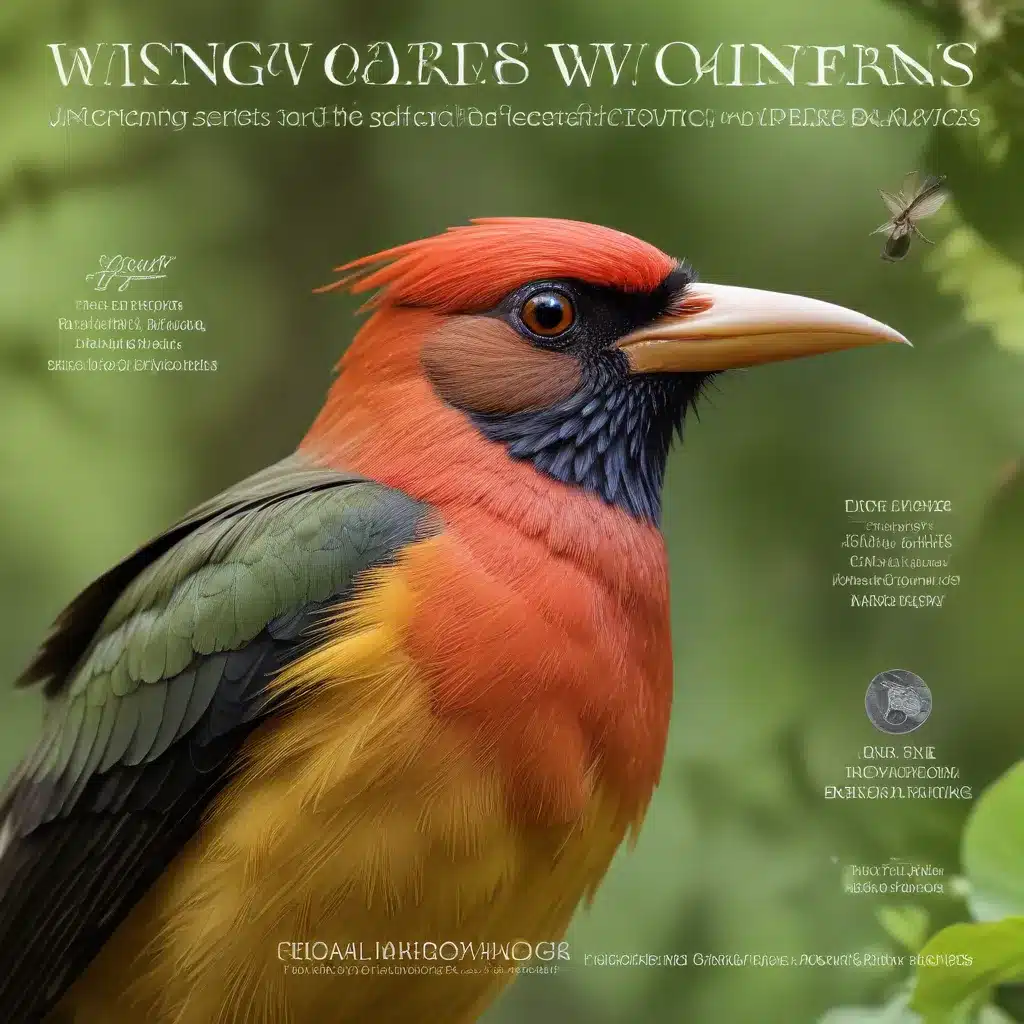
As an experienced avian caretaker and expert in the field of ornithology, I’m thrilled to share my insights into the captivating world of exotic bird species. From the vibrant plumage of tropical parrots to the graceful movements of migratory shorebirds, the diversity and complexity of avian life is truly awe-inspiring.
Avian Diversity
Exotic Bird Species
Our planet is home to an astounding array of exotic bird species, each with its own unique adaptations and behaviors. Consider the resplendent quetzal of Central America, with its iridescent green feathers and long, trailing tail. Or the kōkako of New Zealand, a striking blue-gray bird renowned for its haunting, bell-like calls. These are just a few examples of the incredible avian wonders that can be found across the globe.
Migratory Bird Patterns
Many bird species undertake remarkable migratory journeys, traversing vast distances to take advantage of seasonal changes in food sources and nesting habitats. The Arctic tern, for instance, makes an epic round-trip migration of over 50,000 miles each year, flying from the Arctic to the Antarctic and back again. Observing the intricate patterns and cues that guide these migratory movements can offer fascinating insights into the navigational abilities of our feathered friends.
Avian Adaptations
Birds have evolved a remarkable array of physical and behavioral adaptations that allow them to thrive in diverse environments. From the specialized talons of raptors to the streamlined bodies of seabirds, each adaptation serves a specific purpose, enabling birds to excel at tasks such as hunting, foraging, or evading predators. Understanding these adaptations can deepen our appreciation for the ingenious design of the avian world.
Behavioral Observations
Feeding Habits
The feeding habits of birds are as varied as the species themselves. Some, like hummingbirds, are nectar-feeders, using their long, slender bills to extract sweet nectar from flowers. Others, such as vultures, are scavengers, playing a vital role in the ecosystem by cleaning up carrion. Observing the intricate techniques and strategies employed by birds during feeding can provide a window into their ecological niches and the delicate balances of their environments.
Courtship Rituals
The mating behaviors of birds are often nothing short of spectacular. From the elaborate dances of cranes to the stunning aerial displays of birds of paradise, these courtship rituals are a testament to the power of sexual selection and the creative genius of nature. Witnessing these intimate moments can be a profound and humbling experience, as we glimpse the profound drive that underpins the continuation of avian species.
Nesting Behaviors
The construction of nests is another fascinating aspect of avian behavior. Whether it’s the intricately woven cups of songbirds or the towering stick structures of herons, the engineering feats of birds are truly remarkable. Observing the painstaking care and attention that goes into nest-building can provide insights into the cognitive abilities and instinctual drives of these winged wonders.
Avian Communication
Vocalizations
The rich tapestry of avian vocalizations is truly captivating. From the melodious trills of thrushes to the raucous squawks of parrots, birds use a diverse array of calls and songs to communicate a wide range of information, from territorial defense to courtship displays. Deciphering the nuances of these vocalizations can unlock a deeper understanding of the complex social lives of birds.
Visual Signaling
In addition to their vocal abilities, birds also rely on a variety of visual cues to convey information. The vibrant plumage of many species, for example, serves as a means of attraction, intimidation, and even camouflage. The intricate head-bobbing and wing-flapping behaviors of certain birds can also function as visual signals, allowing them to communicate with their conspecifics and navigate their environments.
Interspecies Interactions
The relationships between different bird species can be surprisingly intricate. Some species, such as mixed-species foraging flocks, actively cooperate to locate and exploit food resources. Others, like nest parasites, may engage in more antagonistic interactions, laying their eggs in the nests of other birds to exploit their parental care. Observing these interspecies dynamics can shed light on the complex social and ecological webs that bind the avian world together.
Avian Conservation
Endangered Species
Unfortunately, many exotic bird species face grave threats to their survival, from habitat loss and fragmentation to human-caused climate change. The critically endangered Spix’s macaw, for example, is believed to have only a handful of individuals remaining in the wild. Efforts to protect and restore these endangered species are of paramount importance, and every individual can play a role in supporting conservation initiatives.
Habitat Preservation
Safeguarding the natural habitats of birds is crucial for their long-term survival. This means preserving the delicate ecosystems, from tropical rainforests to coastal wetlands, that support diverse avian communities. By advocating for the protection of these habitats and supporting sustainable land-use practices, we can help ensure that the world’s avian wonders continue to thrive for generations to come.
Wildlife Management
In addition to habitat preservation, effective wildlife management strategies are essential for the conservation of exotic bird species. This may include the monitoring and regulation of hunting and trade, as well as the implementation of captive breeding and reintroduction programs. By working closely with experts in the field, we can develop and implement holistic approaches to avian conservation that address the multifaceted challenges facing these remarkable creatures.
As an experienced avian caretaker, I am deeply passionate about sharing the wonders of the avian world with others. From the breathtaking diversity of exotic bird species to the captivating intricacies of their behaviors, there is always more to discover and explore. By fostering a greater appreciation and understanding of these winged marvels, we can all play a role in ensuring their enduring presence on our planet. So let us embark on a journey of discovery, unlocking the secrets of exotic bird behavior and championing their conservation for generations to come.
For more information on avian care, breeding, and enrichment, be sure to visit the Mika Birds Farm website. There, you’ll find a wealth of resources and expert guidance to help you provide the best possible care for your feathered companions.


